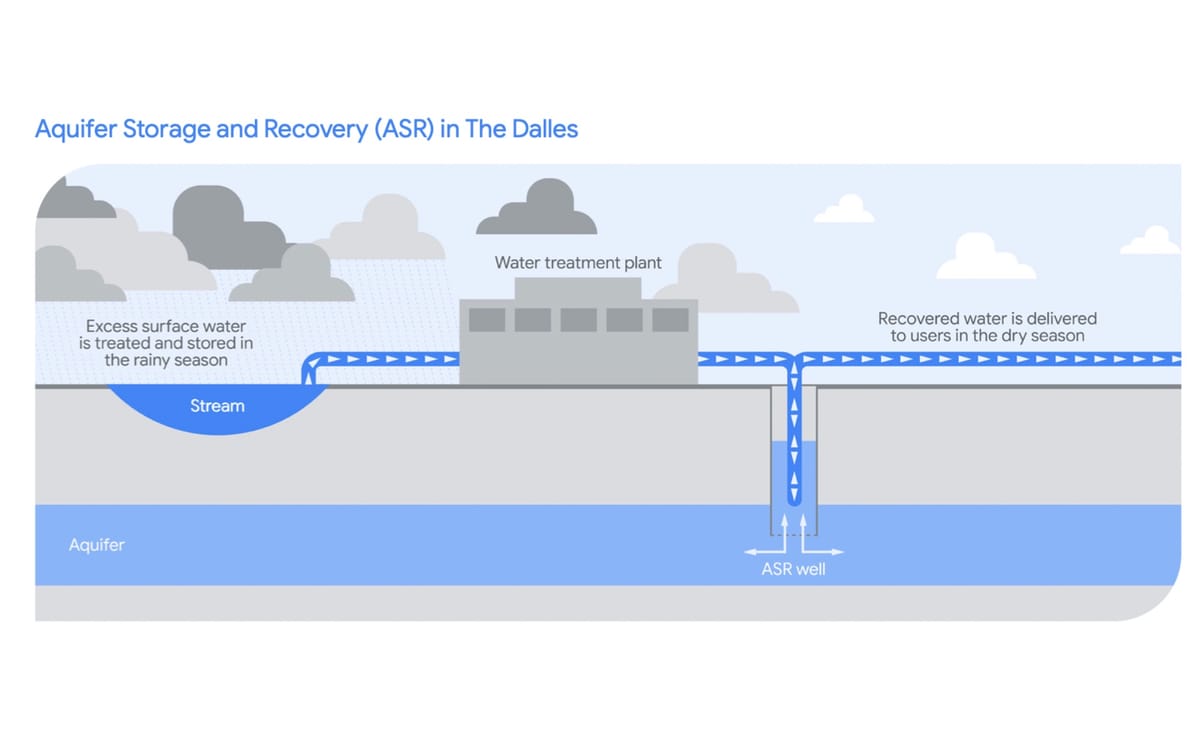Report on a Collaborative Initiative for Sustainable Water Management and Education
Executive Summary
A partnership between Alfred State College and the Allegany County Department of Health (ACDOH) has successfully integrated applied learning with community-focused environmental solutions, directly addressing several United Nations Sustainable Development Goals (SDGs). Students from various technical disciplines developed innovative drinking water treatment plans, providing a model for educational and governmental collaboration that supports SDG 6 (Clean Water and Sanitation), SDG 4 (Quality Education), and SDG 17 (Partnerships for the Goals).
Project Overview and SDG Alignment
The initiative centered on a hands-on learning showcase within an Environmental Tech Concepts course, where students presented tangible solutions for local water challenges. This project was designed to bridge academic theory with practical application, fostering skills necessary for sustainable development.
Core Objectives and SDG Contributions
- Advancing SDG 6: Clean Water and Sanitation: The primary goal was to design and construct functional models for producing safe drinking water from diverse local sources. This directly supports Target 6.1, which aims to achieve universal access to safe and affordable drinking water.
- Promoting SDG 4: Quality Education: The project provided an applied-learning experience, enhancing students’ technical and problem-solving skills. This aligns with Target 4.4, which focuses on increasing the number of youth and adults with relevant skills for employment and entrepreneurship in sustainable industries.
- Fostering SDG 17: Partnerships for the Goals: The collaboration between an academic institution (Alfred State College) and a public entity (ACDOH) exemplifies Target 17.17, which encourages effective public partnerships to achieve sustainable development objectives.
- Supporting SDG 11: Sustainable Cities and Communities: By addressing public drinking water infrastructure, a critical local issue, the project contributes to the development of resilient and sustainable community services.
Methodology and Implementation
The project was executed through a structured, multi-disciplinary approach involving students and faculty in partnership with public health officials.
Project Phases
- Collaborative Planning: Professor Dr. Maryam Tabatabaei and ACDOH Environmental Health Director Emily Owczarzak developed six distinct project briefs focused on treating water from sources including rainwater, wells, springs, and surface water.
- Team Formation and Design: Six interdisciplinary teams, comprising students from Civil Engineering, Construction Management, Surveying, and Architecture, were tasked with designing, planning, and constructing a tabletop water treatment model.
- Expert Engagement: ACDOH representatives engaged with students throughout the semester, providing real-world context on public drinking water infrastructure challenges and regulatory frameworks, thereby enriching the educational experience (SDG 4).
- Showcase and Evaluation: Students presented their completed models and explained the treatment processes to a panel of ACDOH representatives, demonstrating their understanding and innovative approaches to ensuring water safety (SDG 6).
Outcomes and Impact on Sustainable Development
The initiative yielded significant benefits for both the students and the community, highlighting the effectiveness of partnerships in achieving sustainability goals.
Key Outcomes
- Development of Practical Skills: Students gained hands-on experience in water treatment design, teamwork, and problem-solving. Alex Grohman, a member of the winning team, noted the fulfillment of applying classroom knowledge to create a tangible impact on the local community.
- Creation of Community Resources: The student-designed models serve as valuable outreach and educational materials for ACDOH, helping to inform the public about water safety and treatment methods.
- Strengthening the Future Workforce: The project exposed students to critical career opportunities in water management and engineering within Allegany County and New York State, addressing a vital need for skilled professionals to maintain and improve essential public infrastructure (SDG 6).
- Recognition of Excellence: The team of Jaelyn Benjamin, Kyle Ingersoll, Erin Gregoire, Alex Grohman, and Molly Kraynik was recognized for their outstanding work on a spring water protection and treatment system.
SDGs Addressed in the Article
SDG 6: Clean Water and Sanitation
- The article’s central theme is a student project focused on “producing safe drinking water.” Students designed and constructed “drinking water treatment plans” for various sources like rainwater, wells, and surface water, directly addressing the core mission of SDG 6.
SDG 4: Quality Education
- The project is described as an “excellent applied-learning experience” and a “hands-on learning showcase.” It highlights how Alfred State College provides practical education that equips students with “teamwork, creativity, and problem-solving skills,” which are crucial for future employment and align with the goals of quality education.
SDG 9: Industry, Innovation, and Infrastructure
- The article explicitly mentions that “Public drinking water infrastructure is a hot topic across New York state.” The students’ work on designing and building models of treatment systems is a direct engagement with the principles of developing and understanding sustainable and resilient infrastructure.
SDG 17: Partnerships for the Goals
- The entire initiative is a collaboration between Alfred State College (an academic institution) and the Allegany County Department of Health (ACDOH, a government body). This partnership to educate students and develop community outreach materials exemplifies the multi-stakeholder cooperation promoted by SDG 17.
SDG 11: Sustainable Cities and Communities
- The project has a direct local focus, aiming to address water issues within Allegany County. One student notes the fulfillment of “made an impact in the local community.” The use of the students’ work as “outreach materials” by the ACDOH contributes to community education and resilience, which is a key aspect of sustainable communities.
Specific Targets Identified
SDG 6: Clean Water and Sanitation
- Target 6.1: By 2030, achieve universal and equitable access to safe and affordable drinking water for all. The students’ projects, which explore “six distinct approaches for producing safe drinking water,” directly contribute to the knowledge base and technical skills required to achieve this target.
- Target 6.b: Support and strengthen the participation of local communities in improving water and sanitation management. The partnership between the college and the local health department, and the use of the project for “outreach materials,” demonstrates the engagement of local institutions and future professionals in water management.
SDG 4: Quality Education
- Target 4.4: By 2030, substantially increase the number of youth and adults who have relevant skills, including technical and vocational skills, for employment, decent jobs and entrepreneurship. The article emphasizes that the project provides students with “hands-on experience” that they can “use for the rest of their career” and notes the local need for “water operators and engineers,” directly linking the education provided to specific, in-demand job skills.
SDG 9: Industry, Innovation, and Infrastructure
- Target 9.1: Develop quality, reliable, sustainable and resilient infrastructure…to support economic development and human well-being. The students’ task to “design, plan, and construct” models of water treatment systems is a foundational exercise in developing the skills needed to build and maintain the “public drinking water infrastructure” mentioned in the article.
SDG 17: Partnerships for the Goals
- Target 17.17: Encourage and promote effective public, public-private and civil society partnerships. The collaboration between Alfred State College and the Allegany County Department of Health is a clear example of a public-public partnership designed to achieve educational and community health goals.
Indicators for Measuring Progress
SDG 6: Clean Water and Sanitation
- Implied Indicator: The number and variety of water treatment plans developed. The article states that “six distinct approaches” were designed for sources including “rainwater, wells, springs, and surface water.” The functionality of these tabletop models serves as a qualitative measure of progress.
SDG 4: Quality Education
- Implied Indicator: The number of students participating in applied learning projects. The article mentions “Six groups of Alfred State students” with “five members” each, indicating 30 students gained direct, hands-on experience. Another indicator is the acquisition of specific skills, such as “teamwork, creativity, and problem-solving skills.”
SDG 9: Industry, Innovation, and Infrastructure
- Implied Indicator: The creation of prototype infrastructure models. The “tabletop systems” presented by the students serve as tangible outputs that demonstrate innovative approaches to water treatment infrastructure on a small scale.
SDG 17: Partnerships for the Goals
- Implied Indicator: The establishment and execution of a formal partnership between different public sector entities. The article details the collaboration from its inception, including the ACDOH director visiting the class and representatives serving as judges, which indicates a successful, active partnership.
SDG 11: Sustainable Cities and Communities
- Implied Indicator: The adoption of student work for local community use. The fact that the ACDOH plans to use the students’ projects as “outreach materials” is a direct measure of the project’s impact and contribution to the local community.
Summary Table of SDGs, Targets, and Indicators
| SDGs | Targets | Indicators |
|---|---|---|
| SDG 6: Clean Water and Sanitation |
|
|
| SDG 4: Quality Education |
|
|
| SDG 9: Industry, Innovation, and Infrastructure |
|
|
| SDG 11: Sustainable Cities and Communities |
|
|
| SDG 17: Partnerships for the Goals |
|
|
Source: wellsvillesun.com







